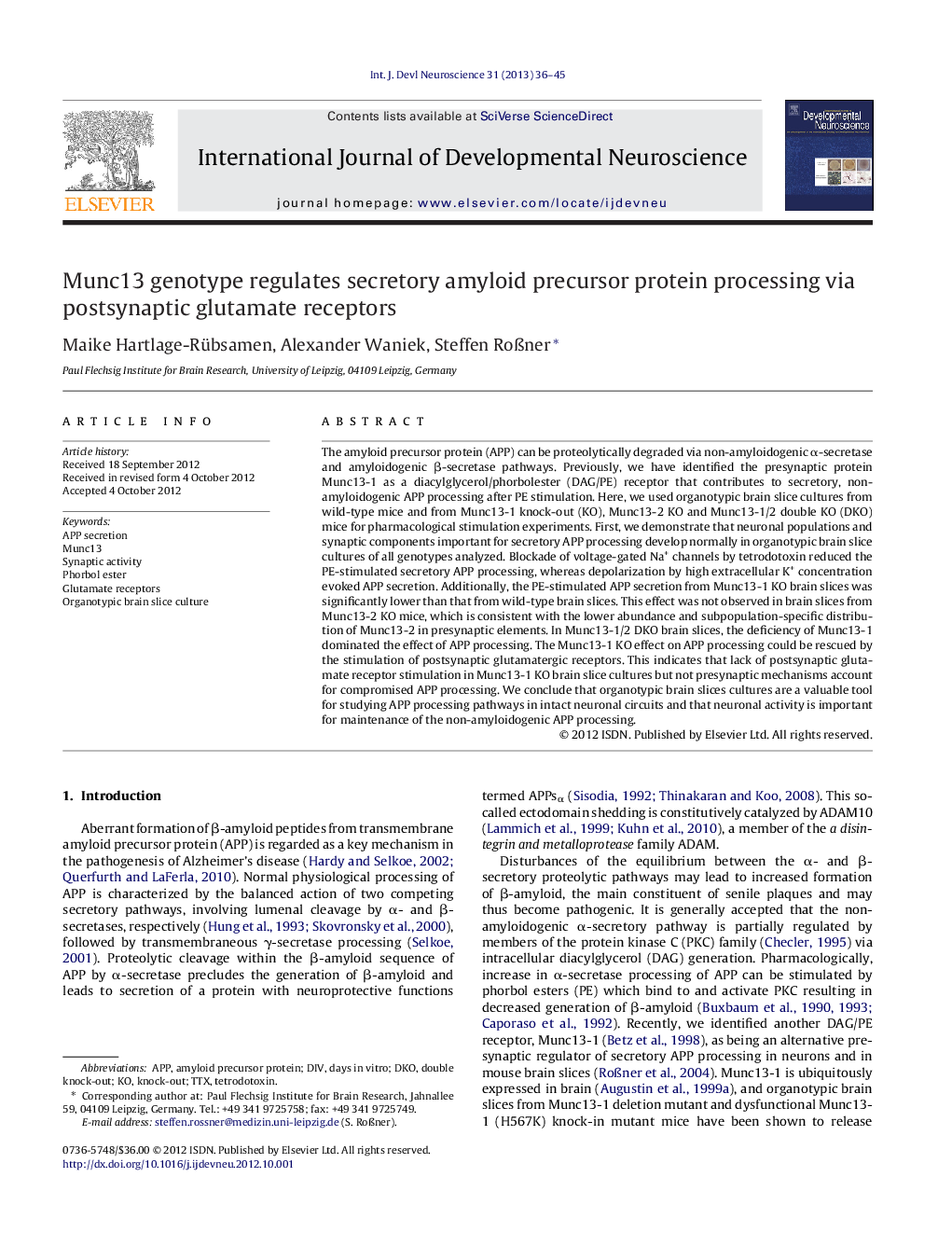| Article ID | Journal | Published Year | Pages | File Type |
|---|---|---|---|---|
| 2786184 | International Journal of Developmental Neuroscience | 2013 | 10 Pages |
The amyloid precursor protein (APP) can be proteolytically degraded via non-amyloidogenic α-secretase and amyloidogenic β-secretase pathways. Previously, we have identified the presynaptic protein Munc13-1 as a diacylglycerol/phorbolester (DAG/PE) receptor that contributes to secretory, non-amyloidogenic APP processing after PE stimulation. Here, we used organotypic brain slice cultures from wild-type mice and from Munc13-1 knock-out (KO), Munc13-2 KO and Munc13-1/2 double KO (DKO) mice for pharmacological stimulation experiments. First, we demonstrate that neuronal populations and synaptic components important for secretory APP processing develop normally in organotypic brain slice cultures of all genotypes analyzed. Blockade of voltage-gated Na+ channels by tetrodotoxin reduced the PE-stimulated secretory APP processing, whereas depolarization by high extracellular K+ concentration evoked APP secretion. Additionally, the PE-stimulated APP secretion from Munc13-1 KO brain slices was significantly lower than that from wild-type brain slices. This effect was not observed in brain slices from Munc13-2 KO mice, which is consistent with the lower abundance and subpopulation-specific distribution of Munc13-2 in presynaptic elements. In Munc13-1/2 DKO brain slices, the deficiency of Munc13-1 dominated the effect of APP processing. The Munc13-1 KO effect on APP processing could be rescued by the stimulation of postsynaptic glutamatergic receptors. This indicates that lack of postsynaptic glutamate receptor stimulation in Munc13-1 KO brain slice cultures but not presynaptic mechanisms account for compromised APP processing. We conclude that organotypic brain slices cultures are a valuable tool for studying APP processing pathways in intact neuronal circuits and that neuronal activity is important for maintenance of the non-amyloidogenic APP processing.
► Organotypic brain slice cultures of Munc13-1/2 double knock-out mice develop normally. ► Neuronal activity stimulates secretory processing of APP. ► Munc13-1 – but not Munc13-2 – deficiency abolishes phorbol ester-stimulated APP secretion. ► The Munc13-1 knock-out effect on APP secretion can be rescued by stimulation of postsynaptic glutamate receptors. ► We conclude that intact neuronal circuits and glutamatergic activity are important for the maintenance of non-amyloidogenic APP processing.
